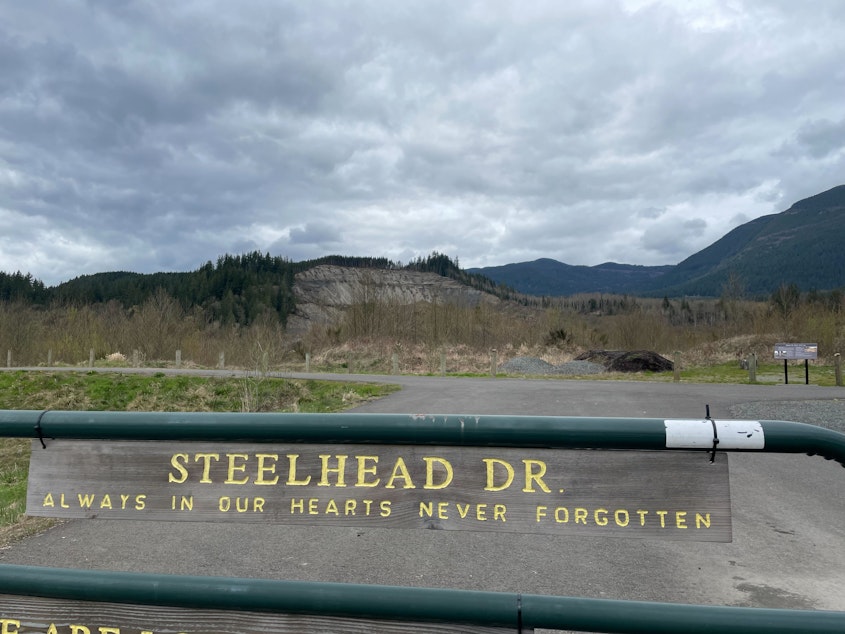'We did the jobs we knew how to do.' Revisiting Oso, 8 years later.

On March 8, 2014, a landslide rushing at 60 miles per hour swept over State Route 530 and Oso, Washington. It engulfed more than 40 homes and remains the deadliest landslide in U.S. history.
Eight years later, the region is finding ways to move forward, while also holding on to memory of Oso and those who called it home.
At the memorial site on SR 530, Seth Jefferds wields a brush cutter. He's cutting back some scotch broom, making sure that the mailbox sculpture designating Steelhead Drive is proudly visible.
"I just come out here to take care of the place, make it look presentable," Jefferds told Soundside host Libby Denkmann.
Jefferds worked as an Oso firefighter and lived on Steelhead Drive with his wife, Chris, for 18 years. He was on a rafting trip with friends when he heard about the landslide.
"I tried calling Chris and she didn't answer. I called the house. Nothing," Jefferds said. "I called on an amateur radio, from a firefighter radio, and I heard them talking on the radio back and forth. I got more and more scared."
When Jefferds drove closer to the disaster site, he had to climb a nearby trail to survey the area. He lost his wife, his granddaughter Sanoah, his dog, and his home in the landslide. Today, he lives just down the road, regularly tending to the grounds and telling visitors about the tragedy.
Sponsored
"It becomes part of who you are," Jefferds said. "Sometimes you get in a laugh about things and some days you don't feel like laughing at all, even eight years later."
Building the future
Down the road in Darrington, Mayor Dan Rankin is busy. His family has long worked in the regional timber industry, once the lifeblood of Oso and Darrington. But the industry ebbs and flows, especially since the landslide crashed down from an old-growth clearcut above Oso.

Many of the local loggers were the first volunteers on the slide in 2014.
Sponsored
"I don't think we changed that much," Rankin said. "We did the jobs that we knew how to do. We worked in the woods all our lives. We knew the terrain, and how to operate in those conditions."
Each year, Rankin joins the Oso families in ringing a memorial bell for each of those who died in the slide — 43 times in all.
"It's not as bleak as it was in the beginning. But it's a scar there. And it's a scar for all of us."
Today, Rankin is focused on the economic development of his town. Darrington has the lowest average household income in Snohomish County. But plans for a new development, the Darrington Wood Innovation Center, are hoping to bring back locals who left due to the lack of jobs and local opportunities.
The planned 30 acre campus will house manufacturers, environmental groups, and researchers to promote innovation in wood technology, and will aim to train workers in sustainable timber practices. At the center of those practices is a lamination technique bringing new possibilities for construction in the United States.
Sponsored
"Darrington is a community of doers," Rankin said.
Listen to the full segment with Seth Jefferds and Dan Rankin by clicking the audio above.





